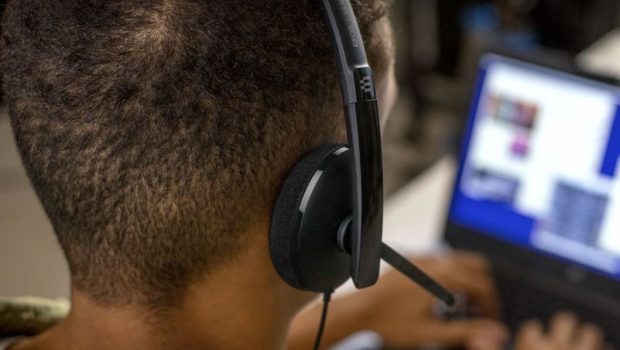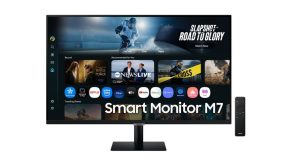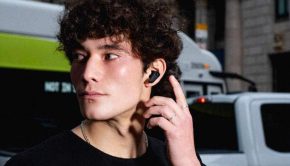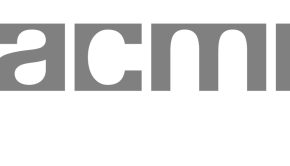Quality audio becomes a critical component for unlocking the distanced learning experience
Education is undergoing fast and fundamental change, with 1.6 billion children in almost 200 countries schooled outside the classroom in just the last year. Both teachers and students alike have had to adapt to the new reality of distance learning and find new ways to connect, communicate and motivate. However, as with the hybrid working trend, the pandemic has revealed new opportunities for innovation and improvement. A new report ‘Reimagining education with high-quality audio’ from Frost & Sullivan and commissioned by audio-technology brand EPOS reveals opportunities to enhance modern learning to become more connected, digitised and efficient.
The immediate and long-term benefits are clear
For millions of students and educators, the abrupt transition to remote learning has been far from ideal but in navigating the new normal clear benefits have also emerged. While the move to distanced learning risks widening the digital divide in some instances, it’s also been found that remote learning can level the playing field, meaning that education becomes more universal for some of the most vulnerable and marginalised population groups.
Clear cost savings associated with remote learning have also become apparent, with significant savings made possible by reducing reliance on physical resources and minimising travel time. This also means that students can learn at their own pace and are able to catch up or revisit a topic with ease. Along with the potential for time and cost savings, going digital means that educators can improve the quality and relevancy of their curriculum by updating resources and materials in real time.
With education institutions around the world investing and improving their educational technology to better facilitate and provide online and distanced learning, longer-term benefits are also emerging. Learning and collaborating online is helping to prepare students with the kind of organisational acumen, emotional intelligence and self-discipline needed for modern careers. While the move to remote education has caused initial disruption, many educators and students are happy with a shift to a more hybrid approach long term. In fact, two-thirds of US students would welcome more online classes post pandemic. Of the students surveyed, 61% in the US say that online courses can be just as legitimate as face-to-face courses, when well designed.
Poor audio exacerbates learning fatigue
Effective learning hinges on student engagement regardless of where the learning takes place and while video and content sharing are well known components of the education experience, audio quality is often overlooked. Good audio technology can play a pivotal role in helping students retain focus and engage, while poor audio in turn can have a serious negative impact. Poor audio experiences have serious implications, 35% of those surveyed often feel frustration, irritation and annoyance due to bad audio, 25% experience moments of stress and 15% feel embarrassment or a lack of confidence. The impact of these experiences could have a serious impact on students’ ability to focus, engage and actively contribute to lessons[1].
Without the immediate physical presence of peers and teachers and a physical learning environment, it is all too easy for distanced learners to become distracted. Poor audio can be a further drain on students’ emotional and mental well-being. Be it audio delays from bad internet connectivity or multiple participants speaking at the same time or background noises coming from each participant’s location, audio challenges can have a negative impact on health by increasing the stress levels.
The need for better connectivity and robust audio is clear and it is not only students who need to be focused on the conversation. For teachers and other educators, poor audio could be disastrous if critical information is missed. The ability to hear multiple voices, recognise who is speaking and engage with reactions from the class are all crucial parts of teaching. Without good audio, teachers risk missing out on crucial information and consequently might provide a less effective learning experience.
Investment in good audio is essential to long-term hybrid learning
Fortunately for many end-users, having effective audio equipment goes a long way to optimising the hybrid experience. According to EPOS, 37% of people feel that the right audio tools can reduce miscommunication, 40% feel that they would significantly reduce the need to repeatedly clarify information and 37% believe good audio would prevent participants from missing critical information.
Even once the disruption caused by the pandemic dissipates the shift to a more hybrid approach will remain. From an industry perspective, remote learning has made it easier to recruit teachers in some instances five-fold and as a result of the shift, the percentage of senior leaders and teachers planning to leave the profession had halved since 2019[2]. Meanwhile, two thirds of students say they would welcome more education online post-pandemic.
“Remote learning means that students and teachers can be anywhere on any given day – whether it’s in the classroom, at home or on the go. The future of learning is already here. For students and educators in a virtual classroom, missing even 1% of what you’ve heard can often become 100% of your concern. Jeppe Dalberg-Larsen, President at EPOS comments: To ensure that hybrid learning remains effective, educators and students must recognise the importance of optimizing concentration and comprehension by utilising high-quality audio tools.”
ABOUT EPOS
EPOS is an audio and video solution company developing and selling devices for business professionals and the gaming community. Based on leading and advanced technologies, the Danish founded company delivers high-end audio and video solutions with design, technology and performance as paramount parameters.
The establishment of EPOS is based on the decision to let the business segments of the joint venture – known as Sennheiser Communications – between Sennheiser Electronic GmbH & Co. KG and Demant A/S evolve in different set-ups. Alongside the introduction of a new own-branded portfolio, EPOS continues to sell the current Sennheiser Communications portfolio co-branded as EPOS I SENNHEISER.
EPOS is part of the Demant Group – a world-leading audio and hearing technology group. As such, it builds on more than 115 years of experience of working with innovation and sound. With headquarters in Copenhagen, Denmark, EPOS operates in a global market with offices and partners in more than 30 countries.
Find more information at www.eposaudio.com.







